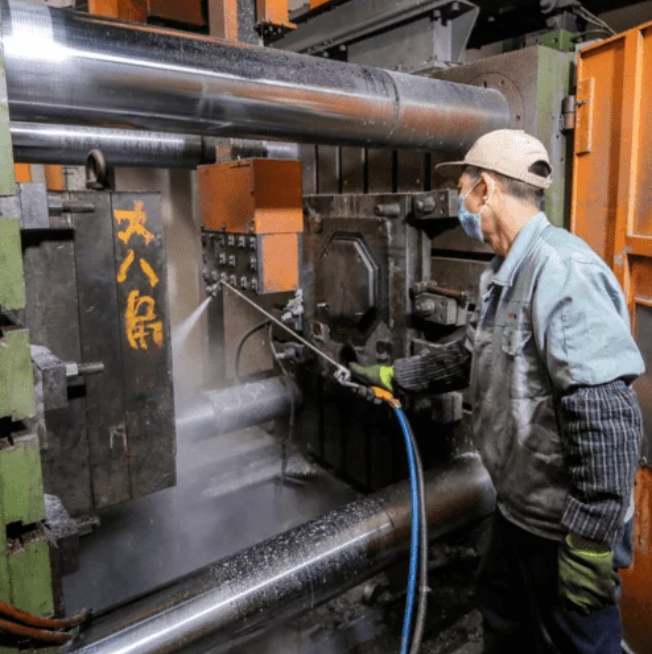Die casting is a highly efficient and precise manufacturing process that is widely used in various industries, such as automotive, aerospace, and electronics. It involves the injection of molten metal into a mold cavity, known as a die, and allowing it to cool and solidify to form the desired shape. This comprehensive guide will provide an in-depth understanding of the die casting process, its advantages, limitations, and applications.
1. History of Die Casting:
Die casting has been around for centuries, with the earliest known examples dating back to ancient China. However, it wasn\’t until the 19th century that the modern die casting process was developed, primarily driven by the need for mass production and cost-effective manufacturing techniques.
2. Types of Die Casting:
There are two main types of die casting: hot chamber die casting and cold chamber die casting. Hot chamber die casting is suitable for metals with low melting points, such as zinc and magnesium, while cold chamber die casting is used for metals with high melting points, such as aluminum and copper.
3. The Die Casting Process:
The die casting process involves several steps, including mold preparation, metal melting, injection, solidification, and ejection. The mold is typically made of steel and consists of two halves, the stationary half and the moving half, which is attached to a machine called a die casting machine.
4. Mold Preparation:
Before the die casting process can begin, the mold needs to be prepared. This includes cleaning and lubricating the mold surfaces to ensure smooth operation, as well as applying a release agent to facilitate the ejection of the solidified part.
5. Metal Melting:
The metal used for die casting is melted in a furnace and brought to the desired temperature. The temperature is critical to ensure proper flow and solidification of the metal. Once the metal is molten, it is transferred to the die casting machine.
6. Injection:
In the die casting machine, the molten metal is injected into the die at high pressure. The pressure is maintained until the metal fills the entire cavity and solidifies. The high pressure helps to ensure that the metal fills even the most intricate details of the mold.
7. Solidification:
After the metal is injected, it rapidly cools and solidifies inside the die cavity. The cooling time depends on the thickness and complexity of the part. The solidification process is carefully controlled to minimize shrinkage and defects in the final product.
8. Ejection:
Once the metal has solidified, the two halves of the mold are separated, and the part is ejected from the die cavity. Ejection pins or mechanisms are used to push or pull the part out of the mold. The part may require further post-processing, such as trimming or surface finishing, to achieve the desired final shape and appearance.

9. Advantages of Die Casting:
Die casting offers numerous advantages over other manufacturing processes. It allows for high production rates, tight dimensional tolerances, and excellent surface finishes. The process is highly repeatable and produces parts with consistent quality. Additionally, die casting enables the production of complex shapes that are difficult or impossible to achieve with other methods.
10. Limitations of Die Casting:
While die casting has many advantages, it also has a few limitations. The initial cost of tooling and equipment can be significant, making it more suitable for high-volume production. Additionally, the process may not be suitable for all types of metals, as some alloys may have poor castability or excessive shrinkage.
11. Applications of Die Casting:
Die casting is widely used in various industries, including automotive, aerospace, electronics, and consumer goods. It is commonly used to manufacture components such as engine blocks, transmission cases, housings, and electronic enclosures. The ability to produce complex shapes and achieve tight tolerances makes die casting ideal for applications where precision and performance are essential.
In conclusion, die casting is a versatile and efficient manufacturing process that offers numerous advantages for producing high-quality metal parts. It has a long history and continues to evolve with advancements in materials and technologies. With its ability to produce complex shapes, tight tolerances, and excellent surface finishes, die casting plays a crucial role in modern manufacturing across a wide range of industries.
-

- Vysoce přesné tlakové odlitky z hořčíkové slitiny pro automobilový zámek zapalování
-

- Slévárenské díly z hořčíkové slitiny rám jízdního kola CNC obrábění a povrchová úprava
-

- Tixomulační komponenty z hořčíkové slitiny
-

- Integrované 3paprskové kolo pro MTB s CNC obráběním a povrchovou úpravou
-

- Hořčíkové tixomilovací díly Pouzdro UAV
-

- Kryt motoru elektrického vozidla z tlakového lití z hořčíkové slitiny uprostřed

 0086-750-5616188
0086-750-5616188 +86 13392089688
+86 13392089688 sales@zhongmei-tech.com
sales@zhongmei-tech.com







